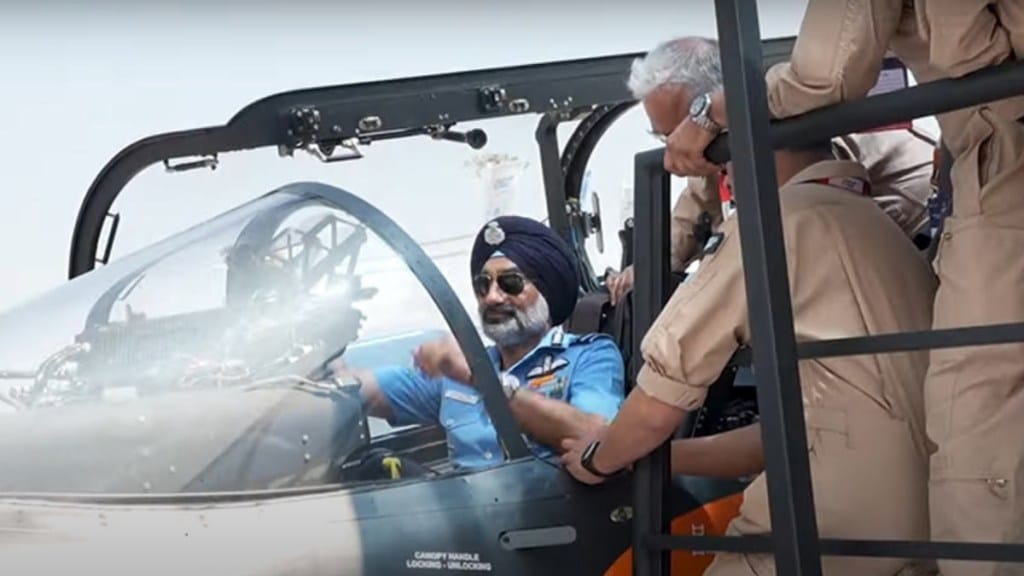Indian Air Force (IAF) Chief Air Chief Marshal A P Singh has sharply criticized Hindustan Aeronautics Limited (HAL) for the ongoing delays in the delivery of the Light Combat Aircraft (LCA)-Mk1A.
His remarks, made during Aero India 2025 in Bengaluru, and caught on camera have triggered a fresh round of concerns about the progress of India’s indigenous fighter jet program.
The Air Chief is heard highlighting his growing frustration over HAL’s failure to meet deadlines that were initially promised. “You have to alleviate (our) worries and make us more confident. At the moment, I am just not confident of HAL, which is a very wrong thing to happen,” Singh remarked, stressing the urgency of the situation.
The IAF Chief pointed out that when he had visited HAL in February, he had been assured that 11 Tejas Mk1A aircraft would be ready. However, he was disappointed to see that not a single aircraft had been delivered. “I was promised that when I come here in February, 11 Tejas Mk1As would be ready. And not a single one is ready,” Singh said.
The Air Chief’s frustrations also extended to the Tejas aircraft displayed at the Aero India show, which he claimed were not Mk1A versions as advertised. He stressed that the term ‘Mk1A’ could not simply be applied based on cosmetic changes or software updates. “The aircraft that you flew, calling it Mk1A. It is not an Mk1A. It cannot happen just by change of one software or by looks. When the weapons come, and the capability comes, then it’s a Mk1A,” Singh clarified.
Earlier in the day (Feb 11, 2025), responding to media queries, HAL acknowledged the delays but attributed them to various challenges, including technical issues, rather than negligence. Chairman and Managing Director D K Sunil reiterated that the company was making every effort to meet the targets. “The delays are not simply attributable to laziness. We understand the concerns and are working diligently to resolve them,” Sunil stated, adding that HAL was confident of delivering at least 11 Tejas Mk1A aircraft to the IAF by the end of March 2025.
The HAL CMD had also during the press conference addressed the broader context of HAL’s progress, explaining that the company’s ability to deliver cutting-edge aircraft like the Tejas had been significantly affected by historical challenges such as the sanctions imposed on India following the 1998 nuclear tests. However, he was optimistic about the future, highlighting the technological advancements in the Tejas Mk1A, including modern avionics like an AESA radar, improved electronic warfare systems, and enhanced maneuverability.
The Tejas Mk1A has garnered attention for its enhanced payload capacity and advanced weapons integration, which will allow it to carry a variety of air-to-air and air-to-ground munitions, including India’s indigenous Astra and Python missiles, as well as precision-guided bombs.
While HAL continues to push forward with its efforts to meet production timelines, Singh’s remarks highlight the ongoing pressure the IAF faces as it grapples with a shrinking fighter fleet. Currently, the IAF is down to just 31 fighter squadrons, far below the sanctioned strength of 42. The timely induction of the LCA Tejas, especially in its Mk1A version, is critical to boosting the IAF’s combat capabilities in the coming decade.
The Tejas program, once completed, is expected to form the backbone of India’s air defence, with the IAF set to operate a mix of Mk1, Mk1A, and Mk2 variants.

